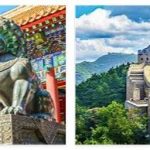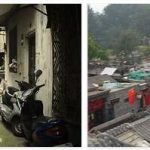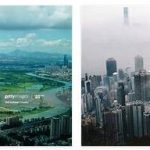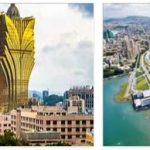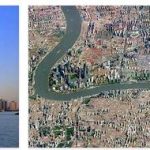
China Guide
China – country information
| Country name | China |
| Official name | People’s Republic of China |
| Capital | Peking |
| Continent | Asia |
| Area | 9,640,820 km2 |
| Population | 1,363,350,000 (2014) |
| The highest mountains | Mount Everest 8848 m (according to measurements in 2005 – 8844 m), Chchokori (K2) 8611 m |
| Longest rivers | Chang-t’iang (Yang-c’-t’iang) 5900 km, Huang-he (Yellow River) 5464 km |
| State system | a republic with a one political party system and a unicameral parliament |
| The biggest cities | Shanghai 12,650,000, Beijing (Capital) 10,125,000, Tianjin 8,050,000 |
| Official language | Chinese |
| Ethnicity/National Composition | Han (Chinese) 92%, Zhuang 1.4%, Manchu 0.9%, Hui 0.8%, Miao 0.7%, Uyghur 0.6%, Chu-t’ia 0.5%, Mongol 0, 4%, Tibetans 0.4%, others 2.3% |
| Religious affiliation | no religion and atheists 58%, Chinese traditional religions 30%, Buddhists 8%, Muslims 2.5%, Christians 0.5%, other 1% |
| Currency | 1 yuan = 10 t’iao = 100 fen |
| gross domestic product (GDP) | US$9,055 (2012) |
| Average life expectancy of the population | 72.58 years (2006) |
| Structure of GDP | agriculture and fishing 25%, mining and industry 41%, construction 5.5%, services 28.5% |
China – Neighboring States
| State | Capital | Area | Population |
| Afghanistan | Kabul | 652,090 km2 | 25,500,100 |
| Burma (Myanmar) | Naypyidaw | 676,578 km2 | 53,259,000 |
| Bhutan | Thimphu | 47,000 km2 | 745,200 |
| India | Delhi | 3,287,260 km2 | 1,241,610,000 |
| Kazakhstan | Astana | 2,724,900 km2 | 17,186,000 |
| Kyrgyzstan | Bishkek | 199,900 km2 | 5,663,133 |
| Laos | Vientiane | 236,800 km2 | 6,580,800 |
| Mongolia | Ulaanbaatar | 1,564,120 km2 | 2,931,300 |
| Nepal | Kathmandu | 147,181 km2 | 26,494,504 |
| Pakistan | Islamabad | 796,095 km2 | 185,914,000 |
| Russia | Moscow | 17,098,200 km2 | 143,700,000 |
| North Korea | Pyongyang | 120,538 km2 | 24,895,000 |
| Tajikistan | Dushanbe | 143,100 km2 | 8,160,000 |
| Vietnam | Hanoi | 331,689 km2 | 89,708,900 |
Country overview
China is the third largest country in the world by area. It occupies almost 1/4 of the Asian landmass and is bordered by 14 states. It is also the country with the largest population, with about 1/5 of the world’s population living here. China boasts one of the oldest civilizations, dating back five thousand years, as well as many important scientific and technical discoveries.
In the 20th century, the country went through major political and economic changes, which were often rather destructive in nature, yet much of its past has been preserved, including a large number of artistic and literary monuments.
Country data
Location: Asia
Time zone: CET + 7 (during summer time: CET + 6)
Total area: 9,596,960 km²
Land area: 9,326,410 km²
Water area: 270,550 km²
Length of the state border: 22,457 km
Bordering countries:
Afghanistan: 91 km
Bhutan: 477 km
Hong Kong: 33 km
India: 2,659 km
Kazakhstan: 1,765 km
Kyrgyzstan: 1,063 km
Laos: 475 km
Macau: 3 km
Mongolia: 4,630 km
Myanmar: 2,129 km
Nepal: 1,389 km
North Korea: 1,352 km
Pakistan: 438 km
Russian Federation: 4,179 km
Tajikistan: 477 km
Vietnam: 1,297 km
Coastline: 14,500 km
Capital: Beijing
Provinces: 32
Anhui, Beijing, Chongqing, Fujian, Gansu, Guangdong, Guangxi, Guizhou, Hainan, Hebei, Heilongjiang, Henan, Hubei, Hunan, Jiangsu, Jiangxi, Jilin, Liaoning, Nei Mongol, Ningxia, Qinghai, Shaanxi, Shandong, Shanghai, Shanxi, Sichuan, Tianjin, Xinjiang, Xizang (Tibet), Yunnan, Zhejiang
Electric current: 220 V / 50 Hz
Telephone code: 00 86
Highest point: Mount Everest 8,848 m
Population
Population: approx. 1.36 billion residents
Population growth: 0.4% per year
Population density (residents per km²): 142
Life expectancy: 73 (male), 77 (female)
Official language: Standard Chinese (Mandarin)
Religions:
- 18% Buddhists
- 5% Christians
- 2% Muslim
- 75% other
Climate
Due to the size of the country there are different climate zones.
In the north, the daytime temperature is around 22 ° C in summer and around -15 ° C in winter. The summer months are characterized by intense heat and high humidity. Occasionally there are very heavy rains. In winter there is a lot of snow (especially in the higher regions).
In the middle of the country it is very hot in summer (over 30 ° C) and there is often heavy rainfall. The humidity is extremely high, especially in July and August. The months from December to March bring a pleasant cooling down. The temperature is between 0-10 ° C. However, a lot of rain also falls during this time.
Southern China has a subtropical climate. In summer it is also very hot here (over 30 ° C) and in winter the temperature does not drop below 10 ° C. The humidity is very high all year round, although there is little rain in winter.

Currency / finance
Currency unit: Renminbi (CNY)
Classification: 1 Renminbi = 10 Jiǎo = 100 Fēn
ATMs: only in tourist centers and in the capital.
International credit cards: Accepted in major cities and travel centers. Otherwise cash payment is usual.
Regulations: The national currency can be imported up to an amount of 5,000 renminbi and exported up to an amount of 20,000 renminbi. There is no limit to the amount of foreign currencies that can be imported. However, a corresponding declaration is required from an equivalent value of over 5,000 US dollars. The export is allowed in the amount of the declared import (minus the exchanged amounts).
You should keep all exchange receipts until you leave the country!
Customs regulations
The following may be carried duty-free:
- 400 cigarettes
- 2 bottles of spirits (each up to a maximum of 0.75 liters)
- small amounts of perfume
(Information applies to people aged 18 and over)
Tourists and people in transit can bring items of personal use with them duty-free.
Audio and video tapes, narcotics, drugs, radios, weapons, and magazines are not allowed into China.
If you take medication with you for your own needs, which could be classified as narcotics / drugs, you should definitely have an English-language certificate from your doctor with you.
The export of antiques, precious metals of all kinds and products made of ivory is prohibited.
Travel advice
In order to visit Tibet, a special permit is required in addition to the visa. The Tibetan capital Lhasa may only be entered by foreign visitors in the company of an official tour guide.
Foreigners over the age of 16 must be able to identify themselves at all times with a passport with a valid Chinese visa. You should always have it with you.
It is advisable to keep a copy of the passport (including a visible entry visa) in the hotel.
Behavioral advice
Numbers and symbols play an important role in China. The number four should be avoided if possible because it represents death.
On the other hand, the number two is perceived as more positive. For gifts, you should therefore pay attention to an even number.
Economy
With up to 10% per year in some cases, China has assumed the strongest economic growth in recent years.
This is possible because many large companies remain in state ownership, but the leadership is no longer co-determined by the government, but that the companies themselves can decide about themselves according to capitalist criteria.
Industries: mining, chemistry, household goods, food production, mechanical engineering, textiles
Natural resources: iron ores, natural gas, coal, hydropower
Land use:
- Usable land: 10%
- Grain cultivation: 0%
- Pasture area: 43%
- Forests: 14%
- other: 33%
Plants
China has almost everything of the plant and tree species found on earth. In the south of the country, in the vicinity of the large rivers, the flora and fauna are particularly diverse.
Animals
The number of different animal species is also very high in China. Especially in the forest areas in the south of the country there are still many antelopes, elk, elephants, leopards, rhinos and tigers.
But even animals that have become rare can still be found here occasionally. There are only a few Chinese alligators and giant salamanders, as well as panda bears.

